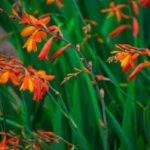There are flowers that play the main roles in our flowerbeds, while others serve as a supplement to them, but without them the flower garden looks much worse. The gypsophila belongs to the second group. Her star-shaped flowers with a diameter of 1 cm will decorate any flower garden. Lush inflorescences of gypsophila resemble a panicle. Add a baby’s breath to any bouquet, and it will become airier and more beautiful.

Gypsophila is a member of the clove family. Many species of gypsophila grow on limestone. The genus of gypsophila includes more than a hundred species, they can be found in Eurasia, and in Australia, and in New Zealand, in northeast Africa.
Flowers gypsophila mainly have a white color and their diameter is 0.4-0.7 mm. There are types with a pink color. Stem of a leafless flower, 10-50 cm long. Semi-shrub species are capable of reaching 120 cm.

Breeding gypsophila
The following breeding options are available for gypsophila:
- Seeds. Planting seeds with a gypsophilus should be in April-May. In the autumn sprouts are transplanted to a permanent place. Perennial species can grow in one place for about 25 years. Both perennial and annual forms are planted in early spring. The soil should be well permeable.
- Cuttings and grafting. Such methods are used for terry forms. The cuttings can serve as young shoots, ripening in May and June. Gypsophila cuttings take root badly – failure to observe the grafting period can lead to failure. Pay special attention to watering – the cuttings do not tolerate too wet soil. Graft cuttings of terry forms in the spring on non-double forms.
Gypsophila Care
- Many growers love gypsophilia for its relative simplicity. All care is reduced to watering and periodic feeding.
- Another positive quality of gypsophila is frost resistance. Young plants still need shelter in the winter. Be sure to mulch the soil with bark and leaves.
- Plant a baby’s breath in a well-lit area, although in shading it will be pleasing to the eye.
- The soil for planting should be well drained, nutritious and contain lime.
- Before flowering, do not forget to make supports to support heavy bushes.
- Do not forget to prune the plant after flowering in summer – it stimulates the formation of young shoots.
Types of Gypsophila
Gypsophila elegans with small flowers of pink, white or bright red color with a diameter of 1 cm. This is an annual plant about 40-50 cm in height. The peduncles are lowered and gathered in lush inflorescences in the form of panicles. May bloom 2-3 months after sowing seeds.

Gypsophila paniculata with numerous flowers with a diameter of 1 cm. This is a perennial plant up to 80 cm in height. The plant takes the form of a spherical bush.

Gypsophila muralis has the form of a bush and reaches 30 cm. Flowering lasts from June to August, its peak falls in the middle of summer.



















